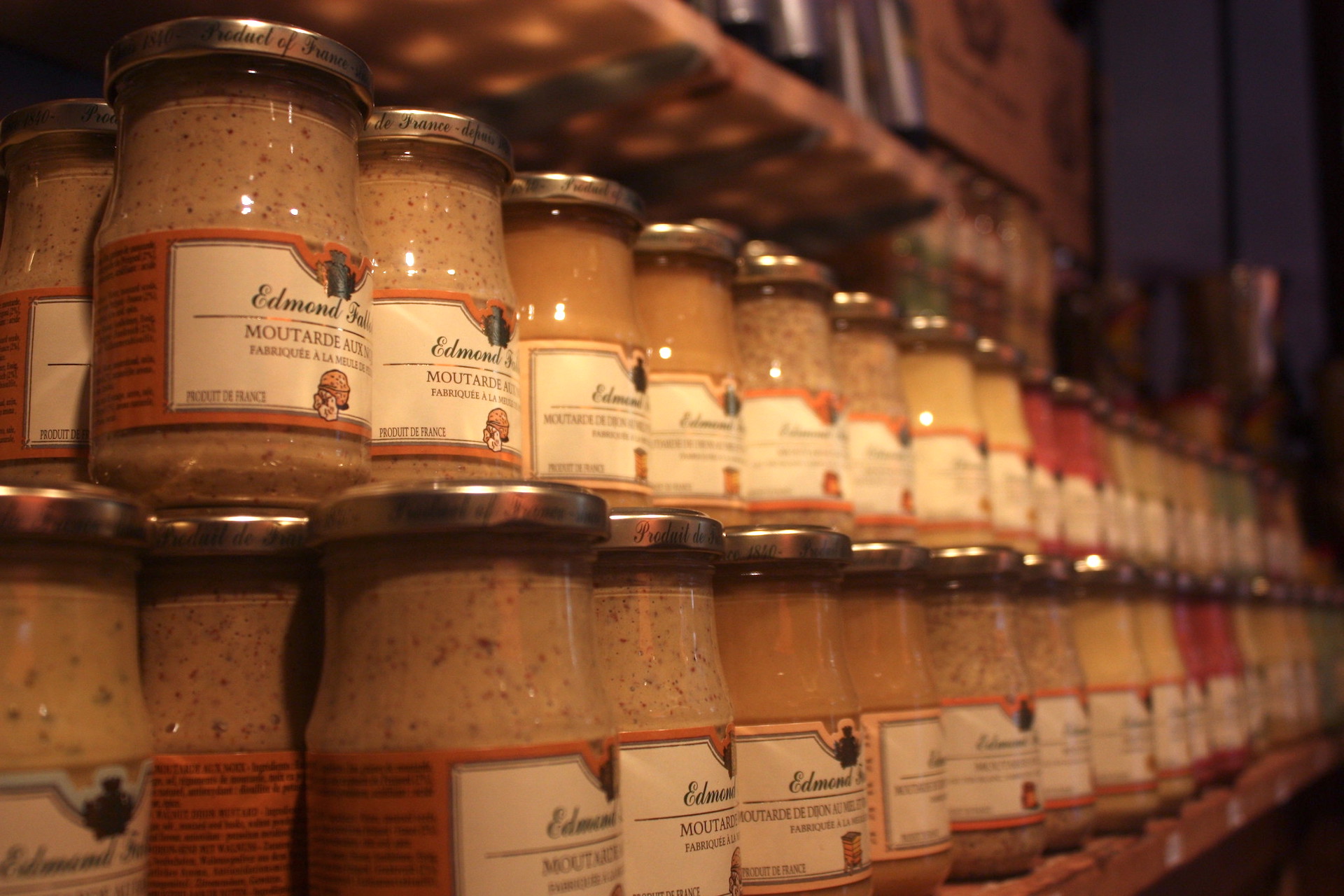We are going to Dijon today so we must talk about mustard. My first memory of French mustard was that it was so sharp for five-year-old me that it came out through my nose. I have learned to appreciate mustard since that traumatic experience but honestly, I've never become a huge fan.
Why is Dijon synonymous with mustard? According to the Encyclopedia Britannica, the earliest evidence of mustard used as a foodstuff comes from ancient Indian and Sumerian texts that stretch back to 3000 BCE. Mustard plants are also mentioned in writing that survives from the ancient Greek and Roman eras. Mustard also appears in the Bible. Matthew speaks about it twice, in Matthew 13, verses 21 to 31, and Matthew 17, verse 20.
Mustard was produced in most winemaking regions around France since the seed was introduced in the 9th century. Mustard was originally made with grape must. Spoiler: in industrial mustard production it’s mostly vinegar nowadays but real Dijon mustard is still made with verjus, the unripe green wine grapes.
It was in the late 13th or 14th century that Burgundy, where Dijon is, became famous for quality mustards. The leaders of the powerful Duchy of Burgundy, a regional sort of kingdom and a political powerhouse of the era, made mustard a prominent fixture on their royal tables. It soon became a symbol of wealth and prestige. Some written records even suggest guests consumed over 300 liters of mustard at a reception held by the Duke of Burgundy in 1336.
It was during the 19th century that Burgundy began to truly dominate mustard manufacturing in France. Dijon mustard was a symbol of sophistication and culinary excellence. Until World War II, huge swathes of woodlands in the region were used to cultivate mustard seeds.
Mustard is produced around the world now. The label Dijon mustard isn’t geographically protected like many food and wine products in France are. If you make Dijon-style mustard – so the smooth yellow variety with the wine but without the seeds in it – you can call it Dijon mustard. It’s also not determined that the mustard seeds need to come from the region. Funnily enough most of the seeds for mustard made around Dijon actually come from … Canada.
Canada is the world’s top exporter of brown mustard seeds and France relies on Canadian production for 80% of what it uses. When there was a severe heat wave and drought in Canada in 2021, the mustard shelves in the French supermarkets were empty the year after. The war in Ukraine also caused a shortfall in mustard seeds on the global market. This was a problem for the French because they are the world’s biggest consumers at around a kilogram per person per year. Some people started hoarding mustard and dodging the implemented one-jar-a-person rule in supermarkets. It was the 2022 variety of the 2020 toilet paper madness.
For the future, Dijon mustard-makers are focusing on producing more mustard seeds in the region again. The 2022 mustard disaster was a harsh wake-up call for the mustard-loving French.
Did we do a good job with this story?





